Splendid Costumes, Adornments Embody Tibetans' Cultural Features
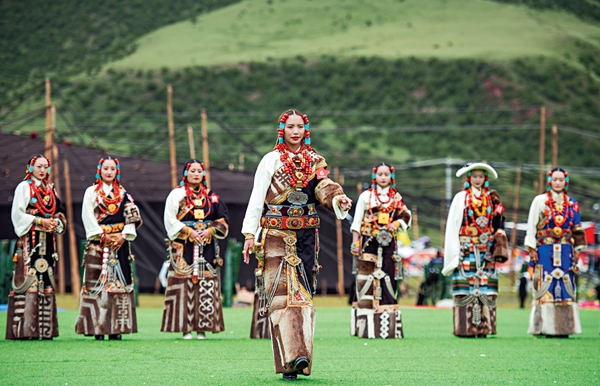
To adapt to local climate and environment, the Tibetan people living in the snow-capped plateau have developed their distinctive costumes. With unique aesthetic tastes, Tibetans have integrated the practical and beautiful aspects of their lives into their costumes and adornments.
More than 4,000 years ago, the ancestors of the Tibetan people lived in the Yarlung Zangbo River Basin. Given their unique geographical environment, climate and religious belief, Tibetans have created a distinctive garment style that resonates with their unique culture.
According to the historical evidence, as early as the 11th century BC, there were signs that Tibetan clothing had developed the basic modern style. Later, people living in various parts of the Qinghai-Xizang Plateau began to communicate with and influence each other. As a result, the styles of the Tibetan costumes became more diverse.
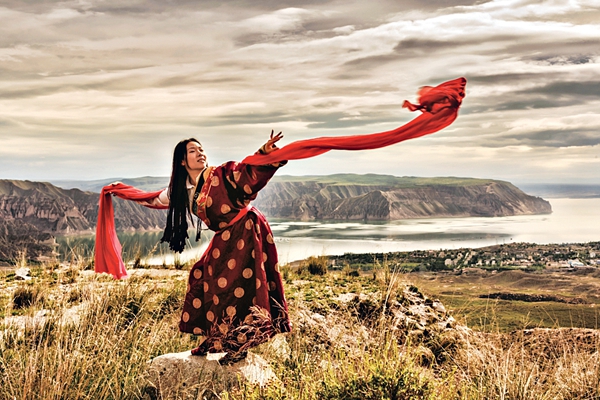
Traditional Tibetan clothing has many styles, including long-sleeve shirts with high collars, coarse cloth trousers with wide waistlines, sleeveless and long-sleeve leather/cloth robes, and long and short sleeveless jackets. There are also accessories like aprons, belts, boots and hats. The items' materials and workmanship vary from region to region. Generally speaking, the Tibetan costumes include robes, casual clothes and shirts, among which robes are the most common.
Tibetan robes feature broad front, right folding lapels, wide waistlines and long wide sleeves. The robes' collars, lapel edges, cuffs and hems are braided with fine fur, pulu (a kind of wool fabric) or colored cloth. Fabrics (used to make robes) vary in different regions. For example, Tibetans living in urban areas prefer to use high-grade wool to make robes, while rural Tibetans usually use pulu, and those in pastoral areas favor fur.
Tibetan men's robes are featured with broad sleeves, which make the men look masculine. Tibetan women's robes are narrower than those of men. The women wear sleeved and sleeveless robes, which reveal their feminine beauty. Through the robes worn by Tibetan men or women, old or young, one may get a glimpse of the people's open-mindedness and free and easygoing characteristics.
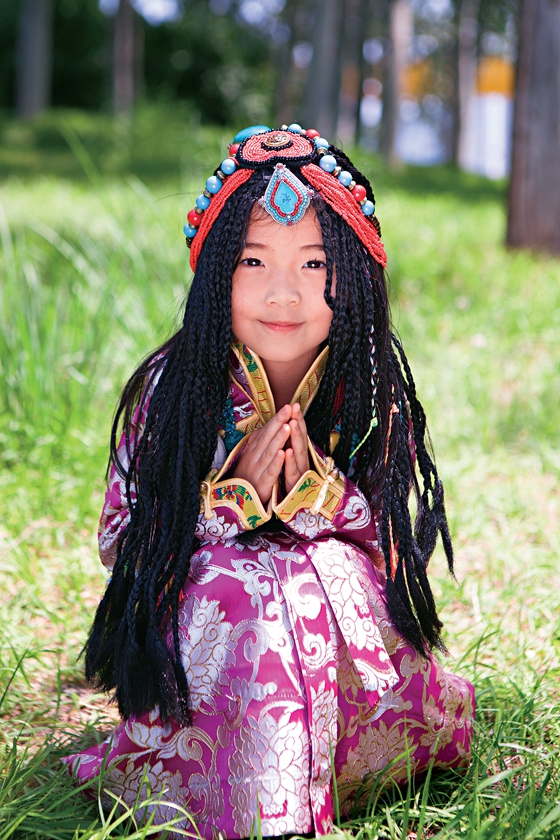
Getting dressed in Tibetan clothes requires a specific sequence. First, a Tibetan man/woman puts on his/her shirt and underpants. Then, he/she wears a robe. As the robe is longer than his/her height, the man/woman lifts the robe's hem. Generally, a man lifts the robe to his knees, while a woman lifts the robe to her feet. Then, he/she ties the robe with a belt at his/her waist. After that, the collar is turned down, and the folded part of the belt is lifted at the waist and adjusted to form a wide bag, in which some commonly used articles can be put. Tibetans usually wear robes without putting their right arms into the items' sleeves. Some Tibetans like to tie the robes' both sleeves to their waists, exposing the upper parts of their high-collared shirts, and keeping their both arms in the shirts' sleeves. Finally, they put on shoes, hats and various accessories.
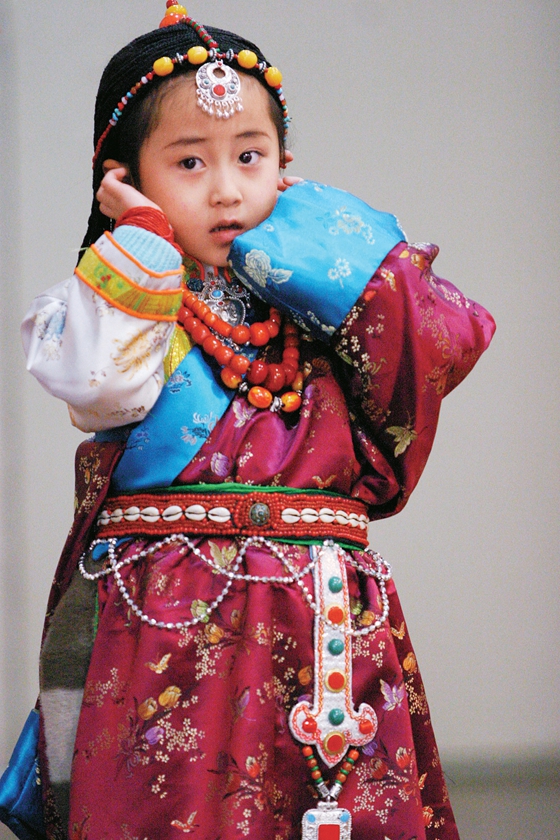
When they wear their clothes, Tibetans take the unpredictable climate on the plateau into consideration. When the weather is hot, they wear one or none sleeve of their robes, and tie the robes' hems at the waists. When it is cold, they put their both arms into the robes' sleeves.
At first, Tibetan belt was hand woven, made of cotton, silk, wool or other materials. Given the limited materials and workmanship, Tibetans could only weave equally spaced straight lines. Then, the people could weave a variety of colored lines into different sized square patterns. Now, Tibetans can create belts with different patterns, which take on different meanings. For example, the pattern of lotus symbolizes a noble scholar. The patterns of peonies, of a dragon and a phoenix, and of tangled branches symbolize auspiciousness and wealth. The patterns of triangles and broken lines symbolize sacred mountains.
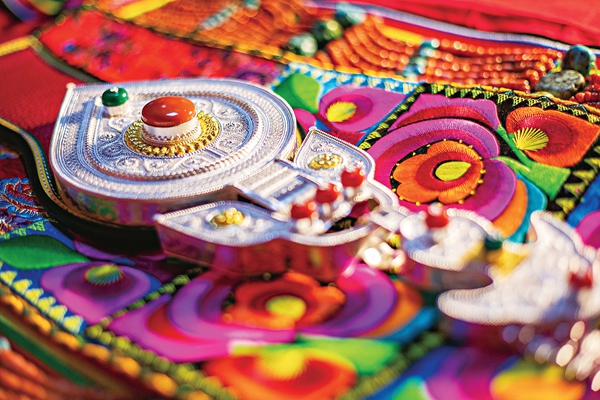
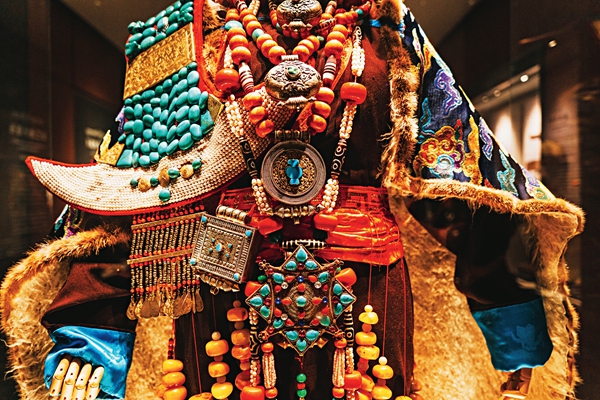
In addition to hand-woven belts, there are leather belts, which are inlaid with satin and silver belts. Men usually wear long ribbons made of sauce-color cloth, and colorful silk belts during festivals and/or dances. Some women's belts are made of high-quality cowhide, which are narrow at both ends and wide in the middle. The lining of the belts are made of woolen cloth, brocade or plain cloth.
Some Tibetans inlay their belts with agate and turquoise, or gild the belts with silver or gold. During festivals, they sing and dance under the snowy mountain, wearing exquisite belts and jewelry.
Tibetans like to wear various ornaments in their hair, around their waists, and on their necks, chests and ears. The ornaments are made of natural materials and/or precious materials, such as honey wax, pine stone, gold and silver. People choose their ornaments according to their own aesthetic tastes, displaying simple, wild, elegant and/or mysterious effects.
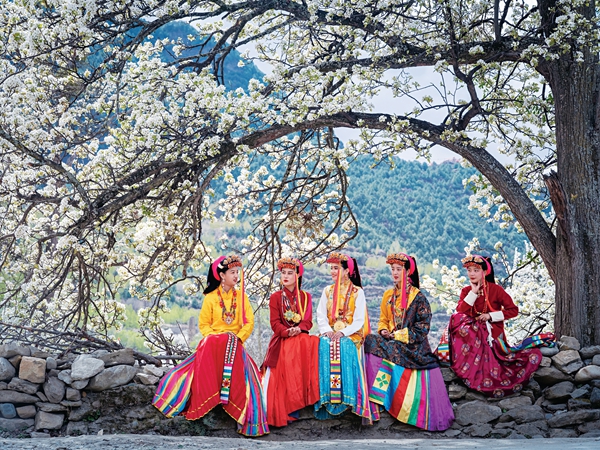
Tibetans also like to wear various hats, such as felt hats, leather hats and gold flower hats. The hats add flair to Tibetan costumes.
Given the rapid economic and social development of Xizang Autonomous Region and the increasing cultural exchange activities between Xizang and various regions in the world in recent years, modern, fashionable elements have been gradually integrated into the designs of the Tibetan traditional costumes and adornments. Now, many Tibetan families have added modern clothes, such as suits and jackets, to their wardrobes. However, Tibetans during festivals and important events have preserved the tradition of wearing traditional costumes and adornments, which remain an important part of their ethnic culture.
Photos from VCG and Tuchong
Source: China Today
(Women of China English Monthly June 2024)
Editor: Wang Shasha
Please understand that womenofchina.cn,a non-profit, information-communication website, cannot reach every writer before using articles and images. For copyright issues, please contact us by emailing: website@womenofchina.cn. The articles published and opinions expressed on this website represent the opinions of writers and are not necessarily shared by womenofchina.cn.?


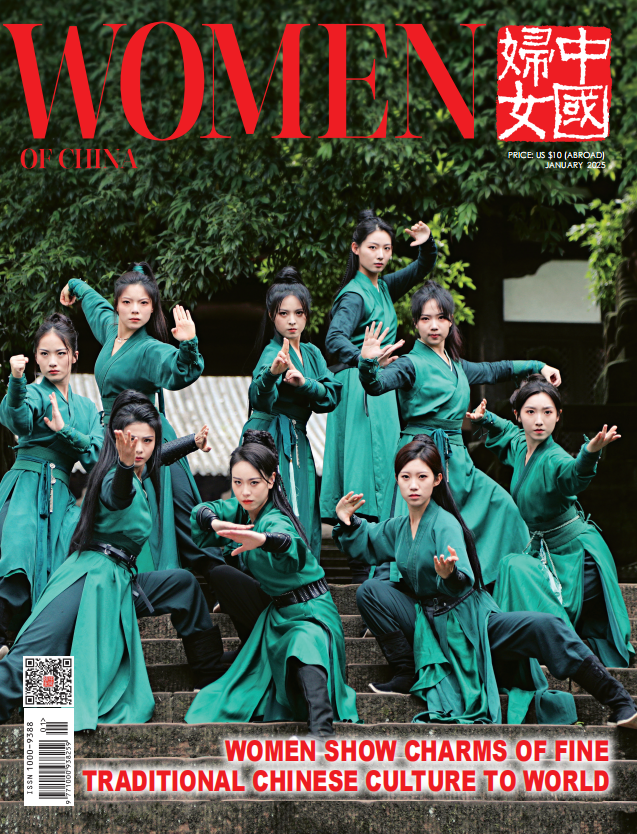



.jpg)

 WeChat
WeChat Weibo
Weibo 京公綱安備 11010102004314號
京公綱安備 11010102004314號